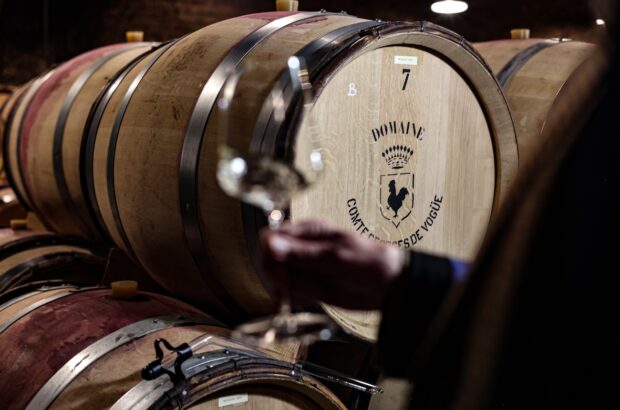We explain the differences between Muscat, Moscatel and Moscato grapes. Muscat is the overarching family of grapes. Moscato is the Italian term for Muscat Blanc à Petits Grains, known for wines like Moscato d’Asti. Moscatel is the Iberian term for Muscat of Alexandria, typically used for sweet wines in Spain and Portugal.
The family of grapes which sit under the ‘Muscat’ nomenclature is one of the oldest, most varied and most widely planted grape families in the world. As you might expect, there are many different synonyms for these grapes, depending on locality and specific genetic identity.
The wines produced from the Muscat family can range from still to sparkling, dry to sweet, light to dark. Below you’ll find a useful guide to unravel the differences between Muscat, Moscatel and Moscato.
The term ‘Muscat’ can refer either generally to the overarching family of grapes, or more precisely to the two key varieties in the family group, Muscat Blanc à Petits Grains and Muscat of Alexandria. Note that the French grape, Muscadelle, most commonly associated with Bordeaux, has no relation to the Muscat family.
Muscat Blanc à Petits Grains (aka Moscato Bianco; Moscatel de Grano Menudo; Muskateller; Muscat of Frontignan; Moschato Spinas, Brown Muscat, Sàrga Muskotály) has small, yellow-hued berries which can produce dry to sweet wines with a distinct floral perfume of orange blossom and honeysuckle. Some mutations of Muscat can be pink, red or even a dark brown.
Muscat Blanc à Petits Grains (in its various forms mentioned above) is the grape of Moscato d’Asti, Muscat de Beaumes-de-Venise, Clairette de Die, Muscat de Rivesaltes and some vin doux naturel, Muscat of Samos, Muscat of Patras and Rutherglen Muscat.
Muscat of Alexandria (aka Moscatel Gordo; Moscatel de España; Moscatel de Málaga; Muscat Romain; Zibibbo) produces larger and darker berries, commonly resulting in concentrated sweet wines – although some dry examples can be found. While still aromatic, Muscat of Alexandria tends to be more subdued in its fragrance compared to Muscat Blanc à Petits Grains, and is one of the very few varieties in the world which can be described as actually having the scent of grapes.
DNA analysis has confirmed that Muscat of Alexandria is the result of an ancient natural crossing of Muscat Blanc à Petits Grains and Axina de Tres Bias, a black-skinned variety originating in Greece. So ancient that Muscat of Alexandria was around at the time of the Romans, who helped to plant it widely in their sphere of influence around the Mediterranean.
Zibibbo (or Inzolia/Insolia) is the southern Italian synonym for Muscat of Alexandria, and while Sicily produces some good examples from the grape, the tiny island of Pantelleria, which lies between Sicily and the Tunisian coast, produces some of Italy’s finest sweet wines from Zibibbo.
A third, lesser known Muscat worth noting briefly is Muscat Ottonel. A 19th century crossing of Chasselas and Muscat grown in the Loire valley, today Muscat Ottonel is typically found in parts of eastern Europe including Bulgaria, Romania and Hungary, as well as Austria and the Alsace region of France.
What is Moscatel?
Moscatel is the Iberian term for Muscat of Alexandria. In Spain, Moscatel is most commonly grown in Málaga, Alicante and Valencia and usually produces sweet wines. It’s sometimes used in the production of sweet Sherry styles, although the Pedro Ximenez grape is more common. In Portugal, Moscatel can be used to craft the sweet wines of Madeira as well as Moscatel de Setúbal.
What is Moscato?
Moscato is the Italian term for Muscat Blanc à Petits Grains and is best known for producing the sweet and dry, still and sparkling wines of Asti and Moscato d’Asti in Piedmont. Unlike the fortified wines of France and Spain, Moscato is vinified using a technique which involves chilling the wine down prior to the completion of fermentation in steel. This leaves an abundance of sugar in the wine, which, due to the halting of fermentation, has a low ABV (generally around 5 to 5.5%). Italian Moscato is often bottled with a bit of carbon dioxide, which creates a slight-yet-pleasant fizziness in the wines.
Moscato Rosa is a little known but high quality red-hued variety, mostly found in small quantities in the Trentino-Alto Adige region of Italy, where it makes sweet wines with striking fragrance and flavours hinting at red fruits and rose petals.
Comparisons
So if you’re wondering what the difference between Muscat, Moscato and Moscatel is, the simple answer is that Muscat is the family group, while Moscato is a synonym for Muscat Blanc à Petits Grains, and Moscatel is a synonym for Muscat of Alexandria.







